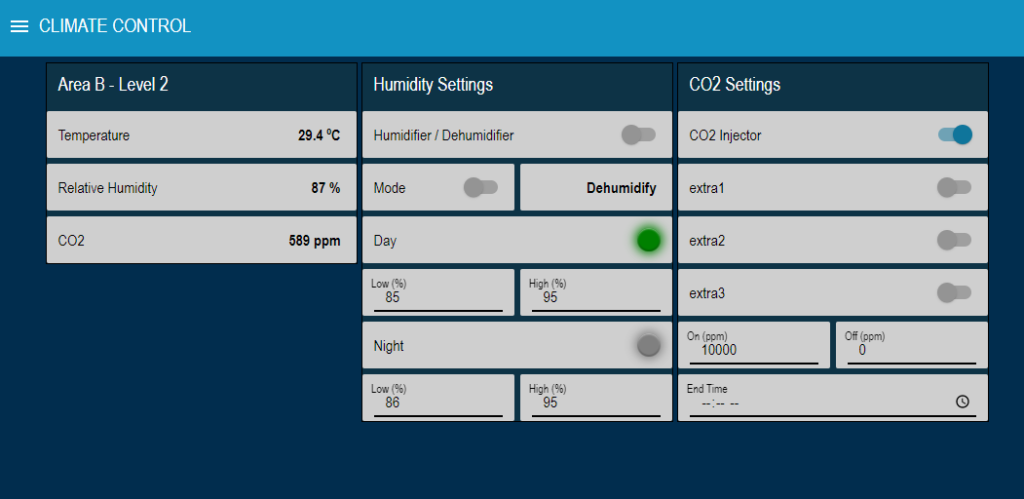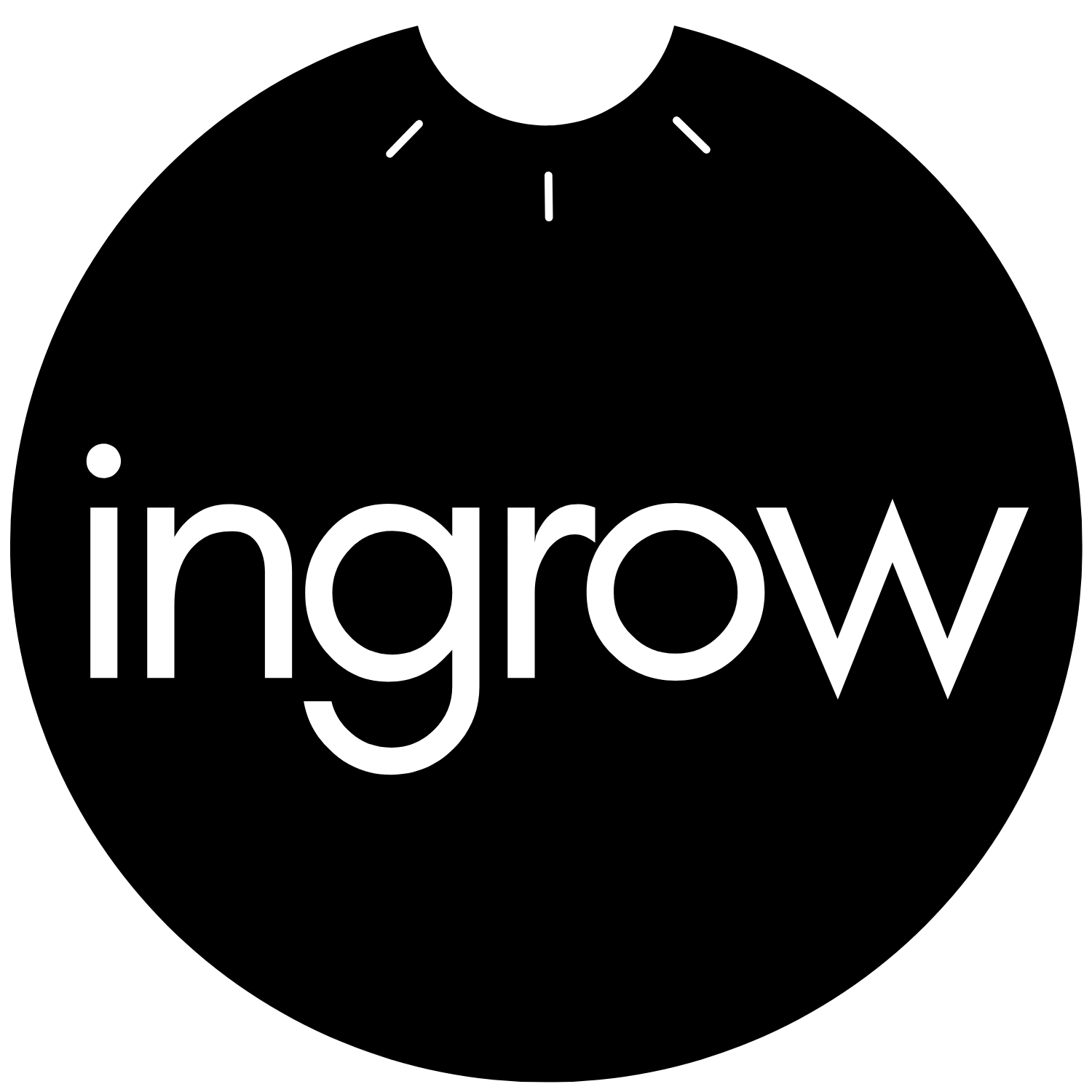
Using our software you can be sure the conditions for optimal growth are continuously right and at the tip of your fingers!
Don’t let a good night sleep be ruined and avoid late drive back to the facility to change a setting. With our solutions you can be sure all data is stored and easily accessible through any of your devices. Adjust parameters and record the consequences of it.
What parameters should you monitor and control?
Temperature and Relative Humidity – these are the basic variables you should monitor real-time, they will give you a sense of plant transpiration performance by calculating VPD and also give you some pointers on how you should manage your nutrient solution, given that for example it the temperatures are high you know that the plant will consume more H20 than nutrients so you should have a lower EC.
About these variables whenever possible you should have multiple monitoring points and have them as close to canopy as possible in order to access the microclimates around the plants. Other variables to take into account when measuring these parameters are Leaf temperature (this will give you a more realistic value on plant health as high leaf temperatures will indicate closed stomatas), Dew point (to ensure you can avoid condensation and all problems that come with it) and Absolute Humidity (it will give you the real quantity of water in you ambient).
Light Intensity – Another important measure to take (mainly in greenhouses or outside crops) is the quantity of photons that are hitting your plant and this can be monitored by a PAR sensor. To know more about light, see our article about Light: quality , quantity & source. Light intensity will give you a sense on when will photosynthetic activity will be potentially higher (if other growth factor are balanced) and it will give you the DLI (Daily light integral). It will also be very helpful if you’re supplementing light to your crop.
pH and EC – These are the basic parameters you need to know about the nutrient solution you’re bringing to plant roots. EC (Electrocondutivity) will give the quantity of total dissolved solids in a solution, and accordingly with the nutrient recipe you are using you’ll get a sense of the quantity of nutrients available and how much the plant is absorbing. PH is important to monitor as the plant only absorbs specific nutrients at specific ph levels.
CO2 – Carbon dioxide is indispensable factor for plant growth, so in protected environments you should keep track on this gas evolution to ensure it will not be a limiting factor and manage its supplementation. Ambient CO2 quantity is usually enough for optimal growth but if you are supplementing other factors like light and nutrients, CO2 should also be added to the system.
Other parameters can be monitored and will help you to know how your climate is helping your plants to grow, such as outside conditions or air renovations or air flow.
Real time and remote monitoring will give you the opportunity to know what’s happening to your crops and manage it from wherever you are. And equally important, all these data points can be analyzed and integrated and they will bring you a lot of knowledge on crop performance and growth optimization strategies on the long run.


Contact us for more information on sensors and software!
